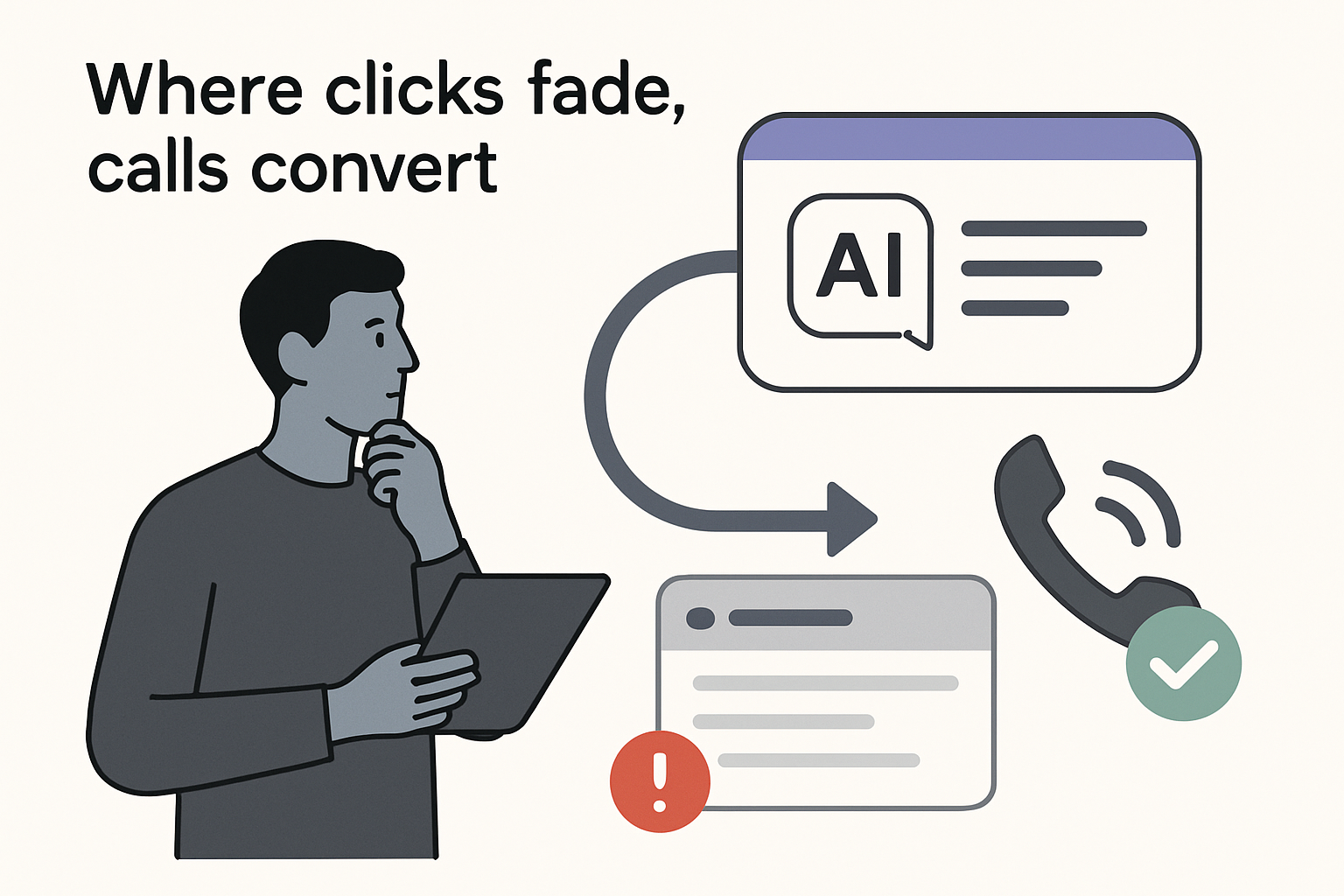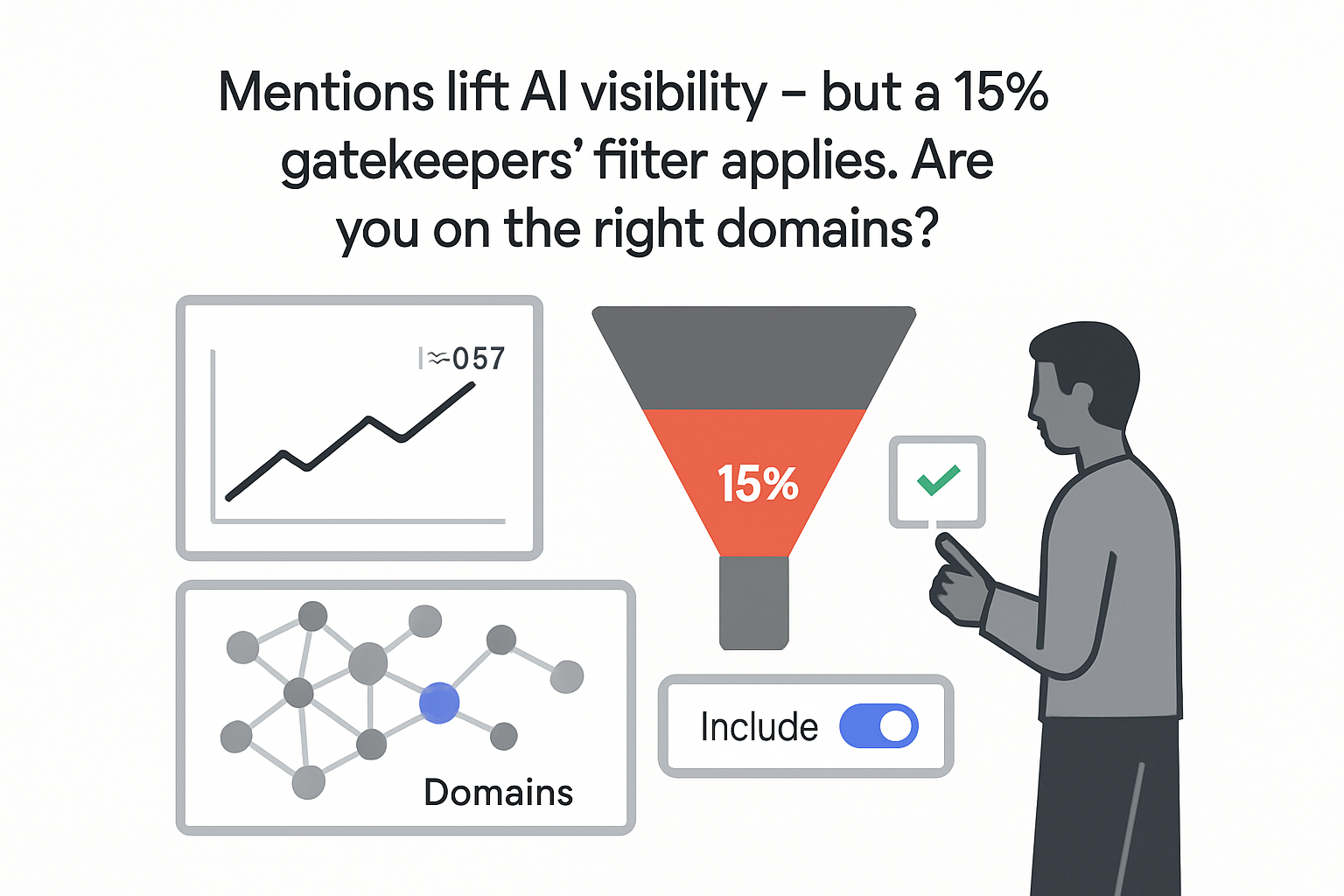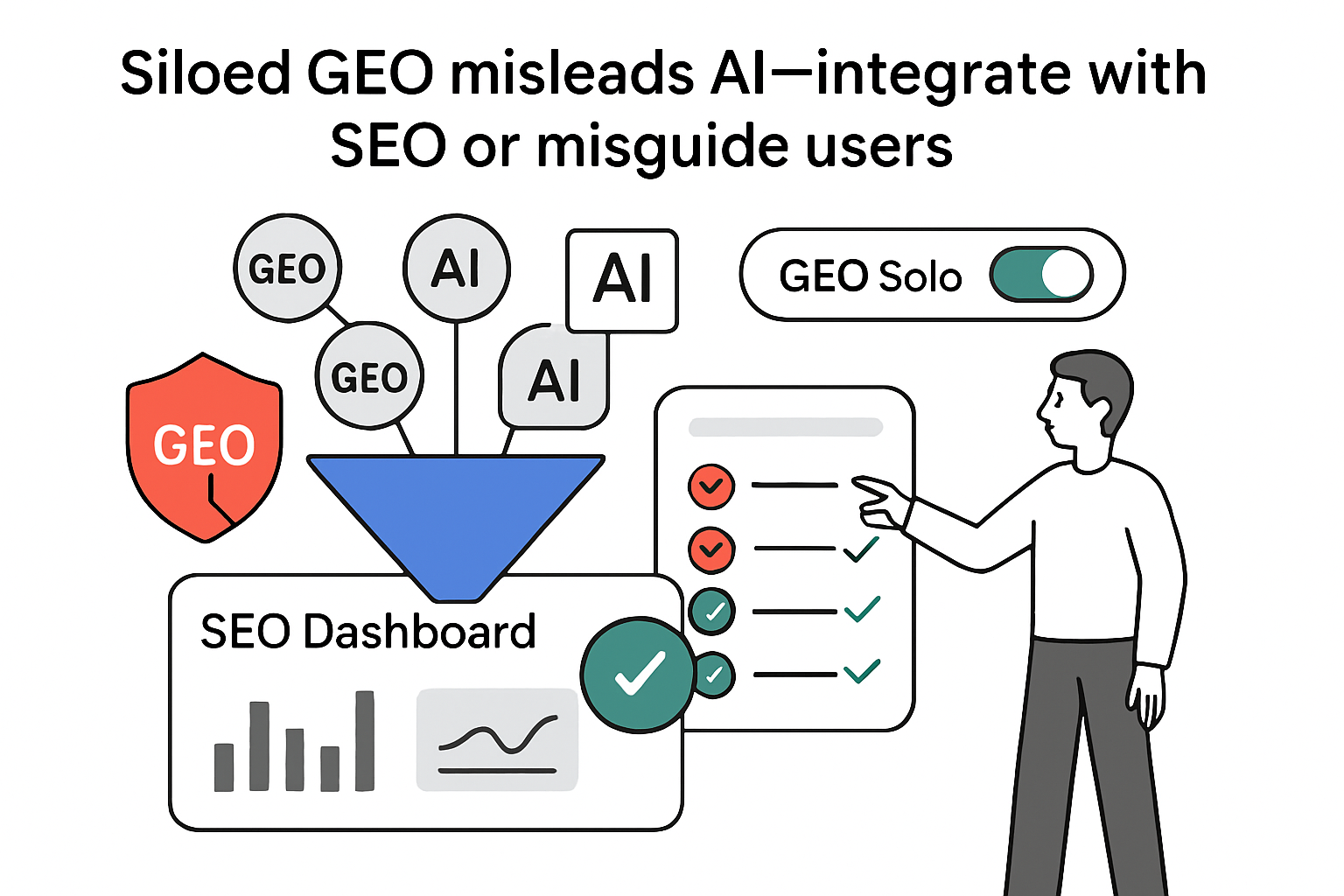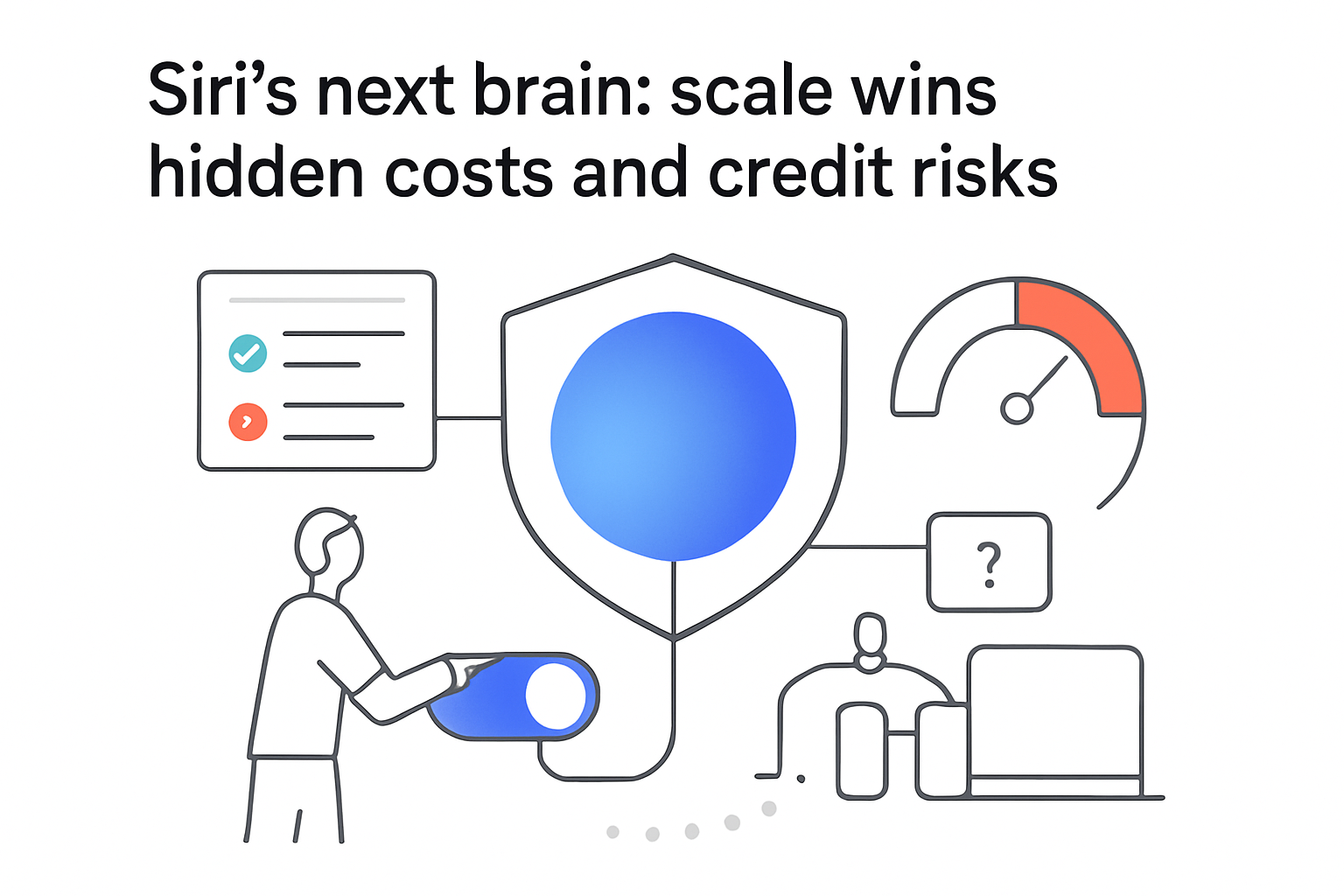AI-generated summaries, voice assistants, and offline touchpoints are reshaping how consumers discover brands and where conversions are recorded. Recent data from SparkToro, Statista, CallRail, and Google highlight a sharp rise in zero-click searches and an equally large gap in tracking high-value phone leads. The sections below distill the evidence and outline action items for marketers.
Future of search: executive snapshot
- 65% of U.S. Google searches ended without a click in 2022, up from 50% in 2019, as on-page snippets and AI answers satisfy intent before site visits [S3].
- 43% of adults interact with a voice assistant monthly, expanding the pool of spoken queries that never show a traditional results page [S4].
- 66% of marketers rate inbound phone calls as their highest-quality lead source, yet only 27% connect those calls to digital campaigns [S2].
- Case data shows up to 90% of “Yelp conversions” occur via untracked phone calls; one agency raised qualified leads 67% after mining call transcripts for copy ideas [S1].
Takeaway: Ranking is no longer the sole proxy for demand capture. Brands must optimize for large language models (LLMs) and feed offline signals into their attribution stack.
Method & source notes
- SparkToro click-through study (Aug 2022) analyzed tens of billions of anonymized U.S. Google searches supplied by Datos [S3].
- Statista Global Consumer Survey 2023 polled 8,020 U.S. adults on monthly voice-assistant use; margin of error ±1.1 pp [S4].
- CallRail “State of the Call 2023” surveyed 601 U.S. marketing leaders across 16 industries using mixed-mode collection [S2].
- Search Engine Journal (May 2024) aggregated multiple CallRail case studies; external validation is limited [S1].
Limitations include U.S. desktop-heavy search data, self-reported voice usage, and small-sample case studies.
Findings
AI summaries and on-SERP answers dilute organic clicks
- Google’s zero-click share rose from 50% in 2019 to 65% in 2022 as “People Also Ask,” featured snippets, and other modules multiplied [S3].
- Early tests of Google’s Search Generative Experience require roughly 1,300 pixels of scroll before the first ten blue links, cutting above-the-fold visibility (BBE, June 2023, n = 1,115 queries) [S6].
- In OpenAI source-ranking tests, 78% of citations came from list or table formats rather than paragraph text (Sept 2023) [S6].
Voice and conversational search shift keyword patterns
- 43% of U.S. adults issue voice queries monthly; 19% do so daily [S4].
- “How do I” and “can you” questions in CallRail transcripts grew 22% year over year across 48 million calls (2022-2023) [S2].
Question-based structures increasingly map to both voice assistants and AI summaries.
Offline and cross-device actions dominate final conversion
- 66% of marketers rank phone calls as top-quality leads, yet only 27% import call data into ad platforms [S2].
- Advertisers that enabled Google Offline Conversion Tracking realized a median 17% cost-per-acquisition reduction in Smart Bidding (15,000 accounts, 2022) [S6].
- One CallRail study found 90% of Yelp-attributed conversions were phone calls ignored by analytics [S1].
Attribution models lag behind buyer reality
- HubSpot’s 2023 survey of 1,200 marketers shows 54% still rely on last-click attribution, even though 43% cite offline tracking as their biggest data gap [S5].
- The average B2B buying cycle spans 17 interactions across four devices (Google/Magna, 6,000 journeys, 2023) [S6].
Interpretation & implications
Likely
- Machine-readable formatting - concise answers, schema markup, and tables - increases the odds of citation in AI snippets, which now capture most search attention.
- Ignoring call-tracking data undervalues high-intent channels; importing phone events typically lowers acquisition cost and improves automated bidding by double digits.
Tentative
- Voice-first queries may reward longer-tail, conversational phrases, but commercial intent varies by category and requires testing before large-scale optimization.
Speculative
- As AI overviews mature, brand mentions rather than URLs could become the main impression metric. Monitoring entity recognition may soon rival rank tracking in importance.
Contradictions & gaps
- SimilarWeb (Jan 2024) places zero-click share at 55%, suggesting measurement differences in rapid pogo-sticking.
- Call-tracking case studies show dramatic lift, but independent, peer-reviewed research remains scarce.
- The conversion impact of Google’s AI Overviews is still unknown pending full rollout.
Data appendix (selected)
| Metric | 2019 | 2022/23 | Source |
|---|---|---|---|
| Zero-click share (U.S.) | 50% | 65% | SparkToro [S3] |
| Monthly voice-assistant users (U.S. adults) | 36% | 43% | Statista [S4] |
| Marketers importing call data | 23% | 27% | CallRail [S2] |
Sources
- [S1] Southern, M. “The Future of Search: 5 Key Findings…” Search Engine Journal, May 2024.
- [S2] CallRail. “State of the Call 2023.”
- [S3] Fishkin, R. “How Many Google Searches End Without a Click?” SparkToro, Aug 2022.
- [S4] Statista. Global Consumer Survey, 2023 – Voice Assistants.
- [S5] HubSpot. “State of Marketing 2023.”
- [S6] Google internal datasets and whitepapers: Offline Conversion Tracking 2022, SGE Layout Tests 2023, Buyer Journey Study 2023.







.svg)